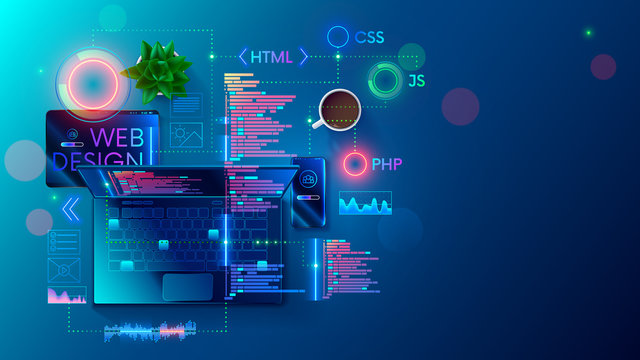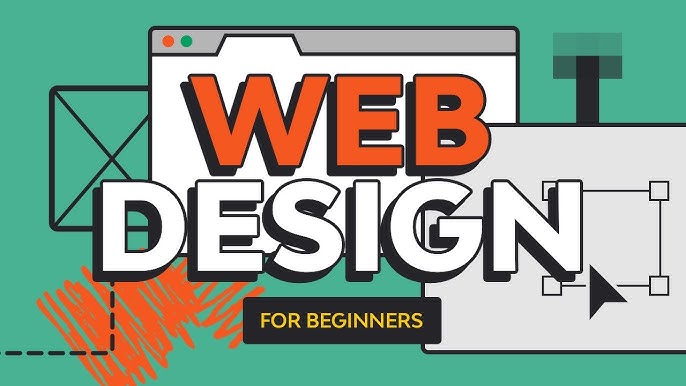Aligned Position Web Design: Building Beautiful and Functional Websites for Your Business
The Most Effective Kinds Of Website Design to Enhance Individual Experience and Engagement
In the ever-evolving landscape of electronic interaction, the efficiency of Web layout dramatically affects customer experience and engagement. Numerous design strategies, such as minimalist, receptive, and interactive layouts, each offer unique advantages that can accommodate diverse individual requirements. Understanding which kinds of website design finest offer these objectives can be essential for companies intending to boost consumer complete satisfaction and retention. The question remains: which style aspects absolutely reverberate with users and foster significant interaction? The expedition of these concepts discloses critical insights that may redefine your technique to website design.
Minimal Web Style
As digital landscapes come to be increasingly cluttered, minimalist Web layout has actually become an effective technique to improving individual experience. This style viewpoint prioritizes simplicity, focusing on important elements while eliminating unneeded disturbances. By making use of adequate white area, simple navigation, and a minimal shade combination, minimalist design cultivates clearness and directs user focus to vital material.
The core principle of minimal website design is to develop a smooth interaction for customers. By lowering cognitive tons, individuals can promptly comprehend details without really feeling bewildered. This direct strategy not just boosts functionality but additionally urges involvement, as visitors are more probable to explore a website that is visually appealing and simple to navigate.
In addition, minimal style often highlights typography and images, making use of these elements tactically to communicate messages properly. In essence, minimalist Web style is not simply a fad; it is a thoughtful method that identifies the significance of user-centered style.
Receptive Website Design
In today's diverse digital atmosphere, receptive Web style has actually come to be vital for producing a smooth customer experience throughout a plethora of tools. As users gain access to sites on mobile phones, tablet computers, laptop computers, and desktop computers, the capability of a web site to adjust its design and material to different screen sizes and resolutions is essential.
Responsive website design utilizes versatile grids, pictures, and CSS media inquiries to guarantee that Web material exists efficiently, despite the gadget used. This approach not just boosts the visual allure of an internet site but also considerably improves use. Customers are a lot more likely to engage with a website that provides a constant experience, as it removes the aggravation of needing to focus or scroll excessively.
In addition, online search engine, including Google, focus on mobile-friendly web sites in search rankings. By taking on responsive layout, organizations can enhance their visibility and get to a broader target market. This technique also streamlines website upkeep, as a single variation of the site can cater to all tools, decreasing the demand for numerous versions. In summary, receptive website design is a basic practice that boosts user experience, interaction, and total fulfillment.
Interactive Website Design
Responsive Web layout lays the groundwork for improving user experience, yet interactive website design takes this a step additionally by involving individuals in an extra dynamic method - Aligned Position Web Design. By integrating components such as computer animations, clickable prototypes, and real-time responses, interactive Web style mesmerizes individuals, attracting them into a richer surfing experience
This method not only promotes involvement yet additionally motivates customers to explore content actively instead of passively consuming it. Techniques such as gamification, where customers earn rewards for completing tasks, can substantially improve the time invested in a site and improve overall complete satisfaction. Interactive functions can simplify complex information, making it more satisfying and digestible.

Integrating interactive layout components can also cause greater conversion prices, as users are most likely to engage with a site that actively includes them. Aligned Position Web Design. Eventually, interactive website design changes customer experiences into memorable trips, ensuring that visitors return time after time
Flat Design
Characterized by its minimalistic strategy, level design emphasizes simplicity and performance, removing unneeded components and focusing on vital attributes. This design approach focuses on use, guaranteeing that customers can browse interfaces with ease and efficiency. By utilizing a clean visual, flat design eliminates the mess commonly found in a lot more luxuriant designs, consequently enhancing individual focus on web content and capability.
The characteristic of level site here layout depends on its use vibrant shades, simple typography, and geometric forms. These aspects add to a visually enticing user interface that is both try here approachable and modern-day. In addition, flat layout promotes a feeling of clarity, permitting individuals to determine necessary activities and details without disturbance.
Moreover, flat design is specifically reliable in receptive Web design, as its simpleness converts well throughout numerous devices and display dimensions. By focusing on essential features, flat style not just fulfills customer needs but additionally encourages smooth interaction, making it a vital element of reliable Web style strategies.
Flexible Web Design
Adaptive Web design tailors the customer experience by producing several dealt with layouts tailored to different screen sizes and tools. Unlike receptive style, which fluidly changes a single format, adaptive design uses distinctive formats for specific breakpoints, ensuring optimum discussion on various platforms. This strategy allows developers to focus on the special qualities of each tool, enhancing use by supplying click for source exactly what customers need based on their context.
One of the main benefits of flexible Web layout is its capability to enhance tons times and efficiency. By serving tailored web content and photos that fit the individual's gadget, internet sites can lessen information use and enhance loading speeds. This is particularly advantageous for users with slower connections or limited data strategies.

Furthermore, adaptive design promotes a much more controlled and consistent branding experience. Considering that developers produce multiple layouts, they can make certain that the aesthetic aspects line up with the brand name's identification across various systems - Aligned Position Web Design. This causes a natural individual experience, enhancing engagement and promoting customer retention
Final Thought
Minimal design promotes clarity and focus, while receptive style guarantees flexibility across different tools, promoting availability. Collectively, these design approaches add to the production of easy to use environments that not just improve satisfaction however additionally drive higher conversion rates, emphasizing their essential significance in contemporary Web layout strategies.

Minimal layout cultivates quality and focus, while responsive style makes certain versatility across numerous gadgets, promoting access. Collectively, these style approaches add to the development of easy to use atmospheres that not only boost satisfaction yet additionally drive greater conversion rates, highlighting their crucial relevance in modern Web style approaches.